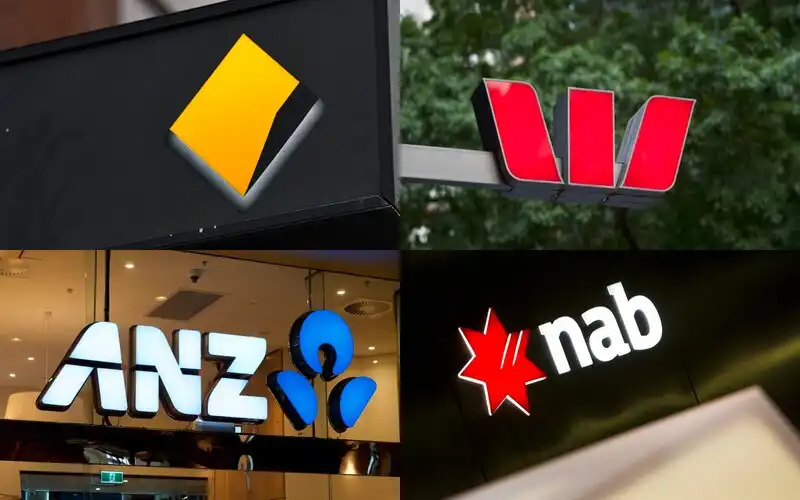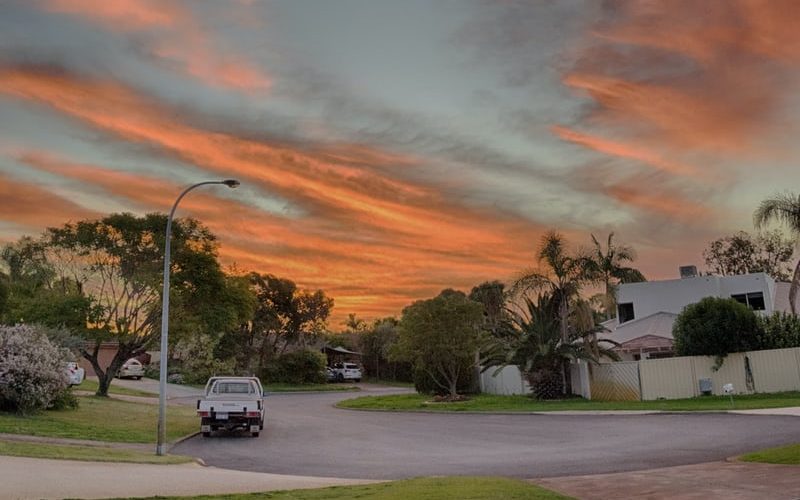You’ve probably heard of ‘recourse’ and ‘non-recourse’ home loans bandied about, particularly when it comes to the United States. In the lead up to the Global Financial Crisis of 2007-09, many properties fell sharply in value, and mortgages were worth more than the home. Many home owners struggling on their mortgage found it easier to hand the keys back rather than battle to build up equity. This was a by-product of non-recourse lending. Due to home owners having negative equity, refinancing to a better deal was also out of the question.
Due to dwindling property values and non-recourse lending in a few states, lenders couldn’t recoup their losses, and dominoes started to fall. In Australia, there’s a slightly different market when it comes to non-recourse borrowing, which we’ll explain in this article.
Advertisement
Buying an investment property or looking to refinance? The table below features home loans with some of the lowest interest rates on the market for investors.
| Lender | Home Loan | Interest Rate | Comparison Rate* | Monthly Repayment | Repayment type | Rate Type | Offset | Redraw | Ongoing Fees | Upfront Fees | LVR | Lump Sum Repayment | Additional Repayments | Split Loan Option | Tags | Features | Link | Compare |
|---|---|---|---|---|---|---|---|---|---|---|---|---|---|---|---|---|---|---|
6.04% p.a. | 6.06% p.a. | $2,408 | Principal & Interest | Variable | $0 | $530 | 90% | Featured 4.6 Star Customer Ratings |
| |||||||||
5.99% p.a. | 5.90% p.a. | $2,396 | Principal & Interest | Variable | $0 | $0 | 80% | Featured Apply In Minutes |
| |||||||||
6.09% p.a. | 6.11% p.a. | $2,421 | Principal & Interest | Variable | $0 | $250 | 60% | Featured Unlimited Redraws |
|
Recourse home loans explained
By default, most home lending in Australia is classified as ‘recourse’ lending. Recourse for the lender basically means if the mortgage holder defaults on their home loan, and the proceeds from the property sale do not cover the remaining debt, the lender has the right to pursue the debt through other means. Usually this means chasing the borrower’s additional assets, whether that’s other property, shares and so on.
Failing that, the lender might take further legal action against the borrower to recoup its losses. A court order might allow the lender to pursue the debt through other means, such as garnishing wages.
Recourse Case Study
Jofre Loder has $400,000 remaining on his mortgage that he’s defaulted since he’s more than 90 days past due. As he bought in Blackwater Queensland at the height of the mining boom, the property today is only worth $350,000.
Under recourse lending, BBW (Big Bad Wolf) Bank pursues the additional $50,000. BBW realises Jofre has $50,000 in shares, and takes legal action against him to recoup its losses through these shares.
Non-recourse home loans explained
In contrast, non-recourse loans are ‘collateralised’ or secured only by the asset it’s held over - in most cases a dwelling. If a borrower defaults on their home loan, and the property is worth less than what’s owed on the mortgage, the lender can seize the dwelling but can’t pursue the additional debt through other means.
If the lender can’t recoup the remaining debt from the sale of the property, it is likely out of luck and can’t pursue the borrower’s other assets as ‘recourse’. As a consequence, non-recourse loans typically attract higher interest rates and have other restrictions to protect the lender in case of default.
Much of the literature on non-recourse lending relates to the United States, and it’s because in Australia it’s basically impossible to find a residential non-recourse home loan, as explained below.
How to find a non-recourse home loan in Australia
Here’s the thing… we started out friends. No, Kelly Clarkson. Here’s the thing, in Australia you can’t find a totally ‘non’ recourse loan. Instead you can find what’s called a limited-recourse borrowing arrangement, or LRBA for short.
Basically the only way you can get a LRBA is if you’re a member of a self-managed super fund or SMSF. They are more commonly called ‘SMSF loans’, but the technically-correct term is LRBA. Those wishing to purchase property for SMSF purposes will only have the choice of an LRBA.
You can compare a variety of LRBAs, or SMSF loans, in the table below.
| Lender | Home Loan | Interest Rate | Comparison Rate* | Monthly Repayment | Repayment type | Rate Type | Offset | Redraw | Ongoing Fees | Upfront Fees | LVR | Lump Sum Repayment | Additional Repayments | Split Loan Option | Tags | Features | Link | Compare |
|---|---|---|---|---|---|---|---|---|---|---|---|---|---|---|---|---|---|---|
6.99% p.a. | 7.00% p.a. | $2,659 | Principal & Interest | Variable | $0 | $230 | 70% | Featured |
| |||||||||
7.24% p.a. | 7.25% p.a. | $2,726 | Principal & Interest | Variable | $0 | $0 | 70% | |||||||||||
7.25% p.a. | 7.65% p.a. | $2,729 | Principal & Interest | Variable | $30 | $1,190 | 80% | |||||||||||
7.55% p.a. | 7.94% p.a. | $2,811 | Principal & Interest | Variable | $395 | $1,920 | 80% | |||||||||||
7.75% p.a. | 7.83% p.a. | $2,866 | Principal & Interest | Variable | $0 | $995 | 80% | |||||||||||
7.49% p.a. | 7.50% p.a. | $2,794 | Principal & Interest | Variable | $0 | $230 | 80% | Featured |
|
LRBAs explained
If the fund fails or the borrower can’t pay their mortgage, the lender can’t come for other assets in the fund - even if the property the loan is secured against falls in value. This is how it is ‘limited’ in recourse.
As a consequence, LRBAs generally attract much higher interest rates than on regular home loans. Only a handful of lenders offer LRBAs, too. Borrowers must also front up with a bigger deposit, with many lenders requiring at least a 20-30% deposit i.e. 70-80% LVR.
With great power comes great responsibility. If you take out an LRBA as part of your SMSF, you must also satisfy a couple of Australian Tax Office rules: the ‘at arm’s length' rule, and the ‘sole purpose’ test. Basically these two mean you can’t live in the property or lease it to a friend or family member; you must charge market rent that’s fed back into the SMSF. The sole purpose of purchasing the property must be for delivering returns for your SMSF for you and your members' retirements.
Non-recourse mythbusting
It’s common to think people walking away from their underwater mortgages, and consequently their homes, was the root cause of the GFC in the US. The truth is, there were many causes, and this was actually one of the many falling Jenga blocks that caused a near total collapse of the country’s financial system.
Everywhere in the United States is non-recourse - MYTH
Only 12 states have what’s generally classified as ‘non-recourse’ borrowing.
-
Alaska
-
Arizona
-
California
-
Connecticut
-
Idaho
-
Minnesota
-
North Carolina
-
North Dakota
-
Oregon
-
Texas*
-
Utah
-
Washington
*Texas is only non-recourse when it comes to home equity loans - first and second home buyers are subject to recourse.
While California and Texas are the first and second most-populous states respectively, it’s not like every American has access to a non-recourse loan. Each state also has their own individual laws when it comes to recourse, especially when it comes to judicial foreclosures.
Other states such as Hawaii, Montana, Nevada, New Mexico, and Oklahoma may allow non-recourse loans with a few caveats. Nevada’s recourse law in particular is interesting, because single family mortgages written after 2009 are not subject to recourse if the financial institution has not allowed refinancing.
A 2011 research paper from the Federal Reserve Bank of Richmond found borrowers in recourse states of the US were 32% more likely to default than borrowers in non-recourse states. For mortgages over $500,000, that figure jumped to more than double.
Non-recourse loans are cheap and plentiful - MYTH
While not so much the case before the GFC, non-recourse loans typically require loan-to-value ratios of around 50-60% in the United States. This means a borrower needs a 40-50% deposit. They may also attract a much higher interest rate than recourse loans.
A lower LVR provides a bigger ‘buffer’ for the home owner should property prices fall. This means there’s a ways to go before the mortgage is worth more than the property value i.e. negative equity.
In Australia any LRBAs, or limited recourse loans, typically restrict the borrower to 70% or at most 80% LVR. Note that here it’s limited recourse, not non-recourse.
Photo by thekurupi on Pixabay

Ready, Set, Buy!
Learn everything you need to know about buying property – from choosing the right property and home loan, to the purchasing process, tips to save money and more!
With bonus Q&A sheet and Crossword!










 Emma Duffy
Emma Duffy
 Harrison Astbury
Harrison Astbury
 Rachel Horan
Rachel Horan

 Denise Raward
Denise Raward

